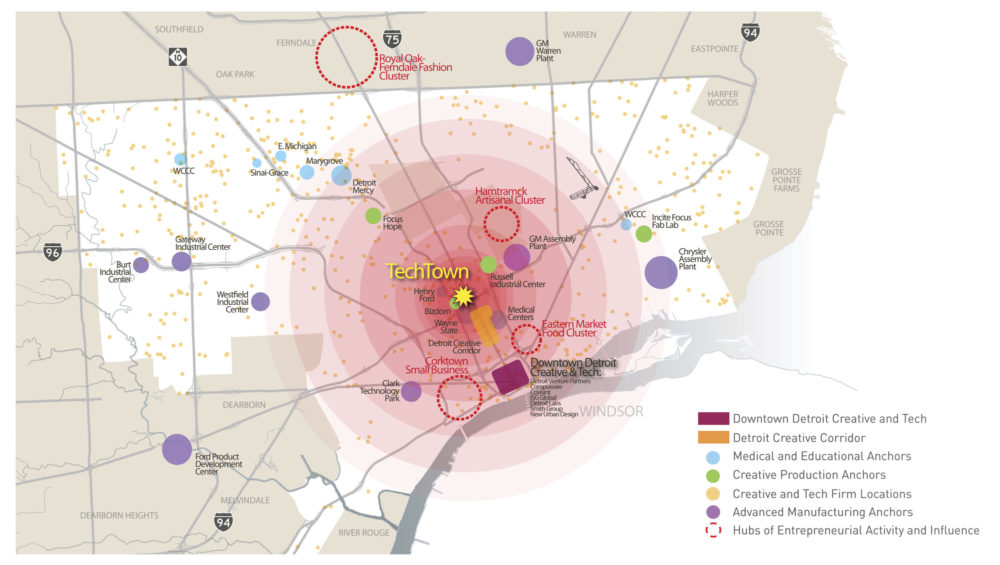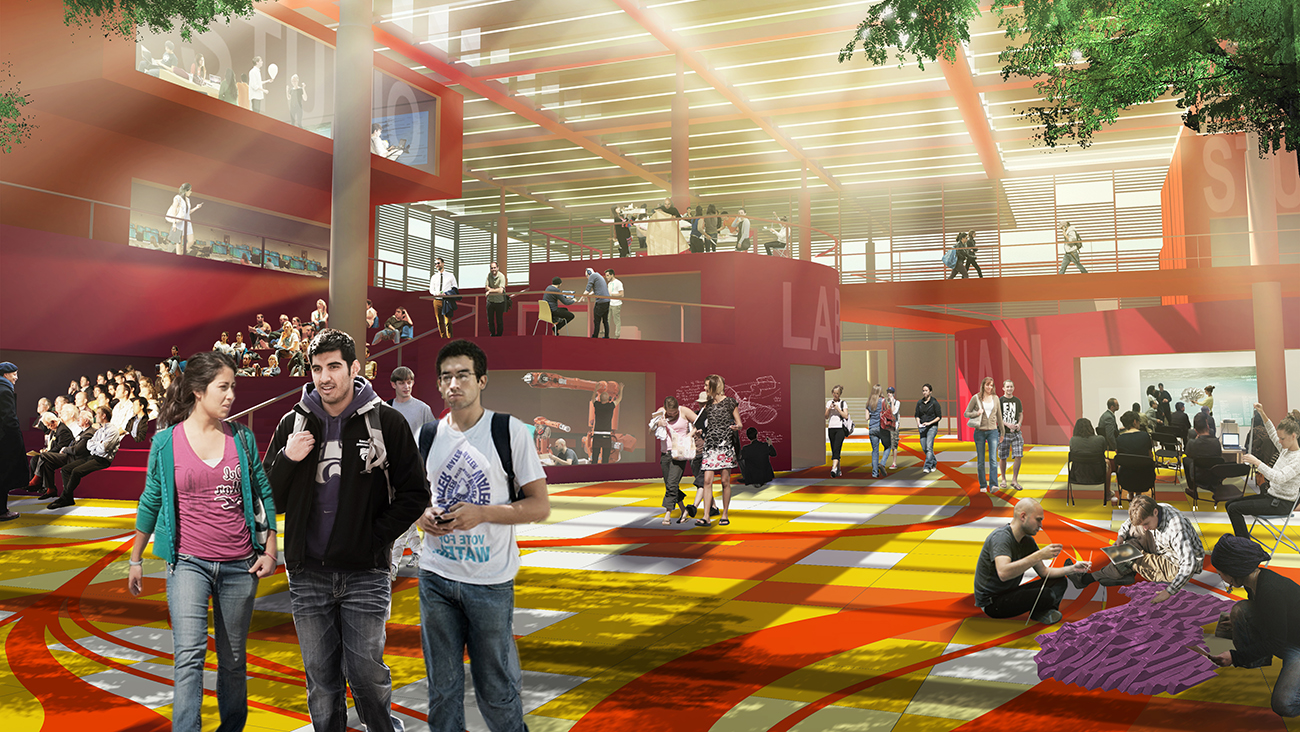
Midtown Detroit TechTown District
Detroit, MI
 Sasaki
Sasaki

Sasaki principal Dennis Pieprz, recently presented at the CityAge conference, The Innovation City: Building a Supercluster, held in Waterloo, Ontario. Waterloo is a city at the heart of a region dubbed Canada’s Technology Triangle, a most fitting setting for a meeting of minds on how to plan, develop, and support innovation districts around the world.
Drawing from his direct domestic and international experience in the field, Dennis shared his expertise on planning and designing technology-driven innovation districts. As one of the only designers presenting within a program largely dominated by business and city leaders, Dennis’ point of view added welcomed diversity to the dialogue.
Through analysis of projects like Sasaki’s Midtown Detroit Tech Town and Monterrey Tec, Dennis arrives at a distilled set of best practices to guide the cultivation of economically-vibrant tech clusters. It requires a choreographed integration of urban planning, architecture, and landscape disciplines to cultivate a thriving tech and innovation community. It is not enough to develop a collection of buildings with expedient surface parking lots and expect a burst of creative energy to take hold and generate innovative outputs.
For Dennis, the magic is in the connective tissue that binds buildings to place, place to environment, and people to one another. A combination of experience-based planning and design philosophy; keen comprehension of context; consideration of the power of human interaction; and a fundamental grasp of the larger economic, political, social, and environmental forces at play. These are the underpinnings of the following six guiding principles in tech and innovation district design:
These guidelines, if held in view throughout the planning, design, and building process, help to promote a culture of connection, engagement, and place. Innovation districts—so often characterized by dynamism, creative energy, and organic growth in our collective understanding of them—are hardly ever born of pure happenstance. The most successful districts are those that are thoughtfully cultivated from the outset to enable the steady growth of a culture and environment that supports new industries to take hold and flourish in surprising, boundless ways—though all the better if their hard-won cultivation appears invisibly effortless.